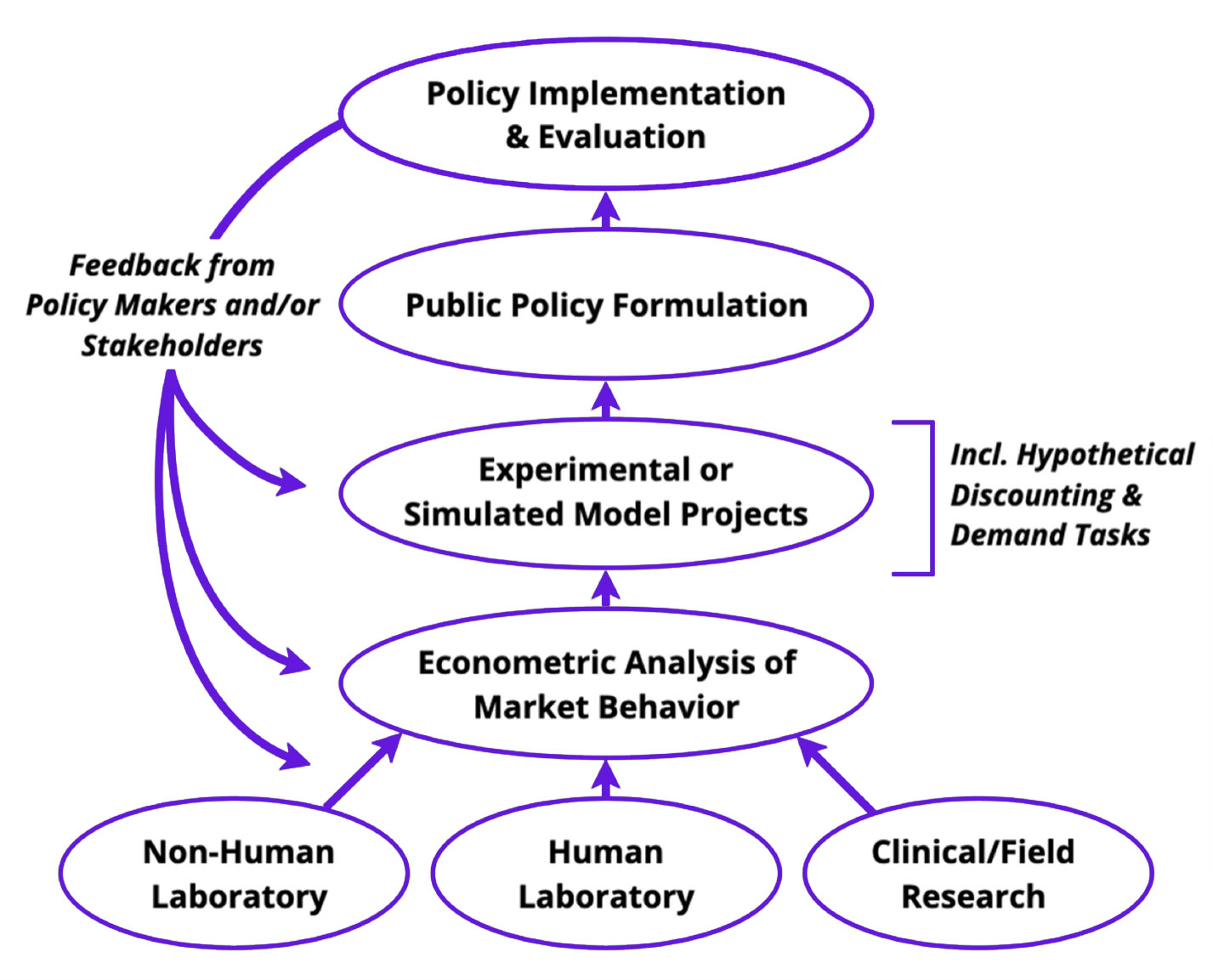Behavioral Economics
Public Policy
Empowering Policies with Data-Driven Insights


Innovating Public Policy
Empirical Insights for Sustainable Decisions
Areas of Focus:
- Developing Hypothetical Purchase Task (HPT) Questionnaires: One notable area of focus has been developing and validating Hypothetical Purchase Task (HPT) questionnaires (Reed, Gelino, et al., 2022; Roma et al., 2016, 2017). These questionnaires, grounded in operant behavioral economics, provide a scalable and cost-effective means to gather empirical data on consumer motivation and decision-making.
- Versatile Application: Originally utilized in addiction research to understand demand for drugs of abuse, HPTs have proven to be versatile tools applicable to a wide range of consumer goods and services.
- Informing Policy: By modeling demand curves based on hypothetical scenarios, these tasks yield rich quantitative data that can inform policy decisions in public health, marketing, and environmental sustainability.
Assessing Policy Impact
Building on Foundational Research
Our team has applied behavioral economic principles to evaluate and predict the impact of various public policies (Hursh, 1991; Hursh & Roma, 2013; Reed, Gelino, et al., 2022; Reed, Strickland, et al., 2022).
Demand Curve Methods
For instance, our work has demonstrated how demand curve methods can quantify the elasticity of demand for essential commodities, offering a reliable metric for assessing policy interventions. This approach has been instrumental in shaping policies related to:
- Drug control
- Pricing
- Public transportation
Impact Studies
Drug Use Impact
The elasticity of demand for substances has been used to model the potential impact of public policy on drug use, supporting the development of effective drug control policies (Hursh, 1991; Kaplan & Reed, 2018).
Transportation Policy
Our research on transportation choices has provided empirical data to support investments in infrastructure projects aimed at reducing carbon emissions and promoting sustainable travel (Gelino et al., 2024; Zhu et al., 2020).
Responding to Public Health Crises
Behavioral Economics in Crisis Response
Recognizing the limitations of traditional applied methods in rapidly evolving scenarios, we adapted behavioral economic frameworks to generate timely and relevant data for public health decision-making.
For instance, our studies leveraged hypothetical discounting and demand tasks to assess people’s willingness to engage in preventive behaviors such as social distancing and to gauge demand for diagnostic testing under varying cost scenarios (Hursh et al., 2020; Strickland, Reed, Dayton, et al., 2022; Strickland, Reed, Hursh, et al., 2022).
These approaches have yielded critical insights into behavioral mechanisms underlying health-related decisions, demonstrating how behavioral economics can be swiftly and effectively leveraged to inform public health policy and crisis management.



